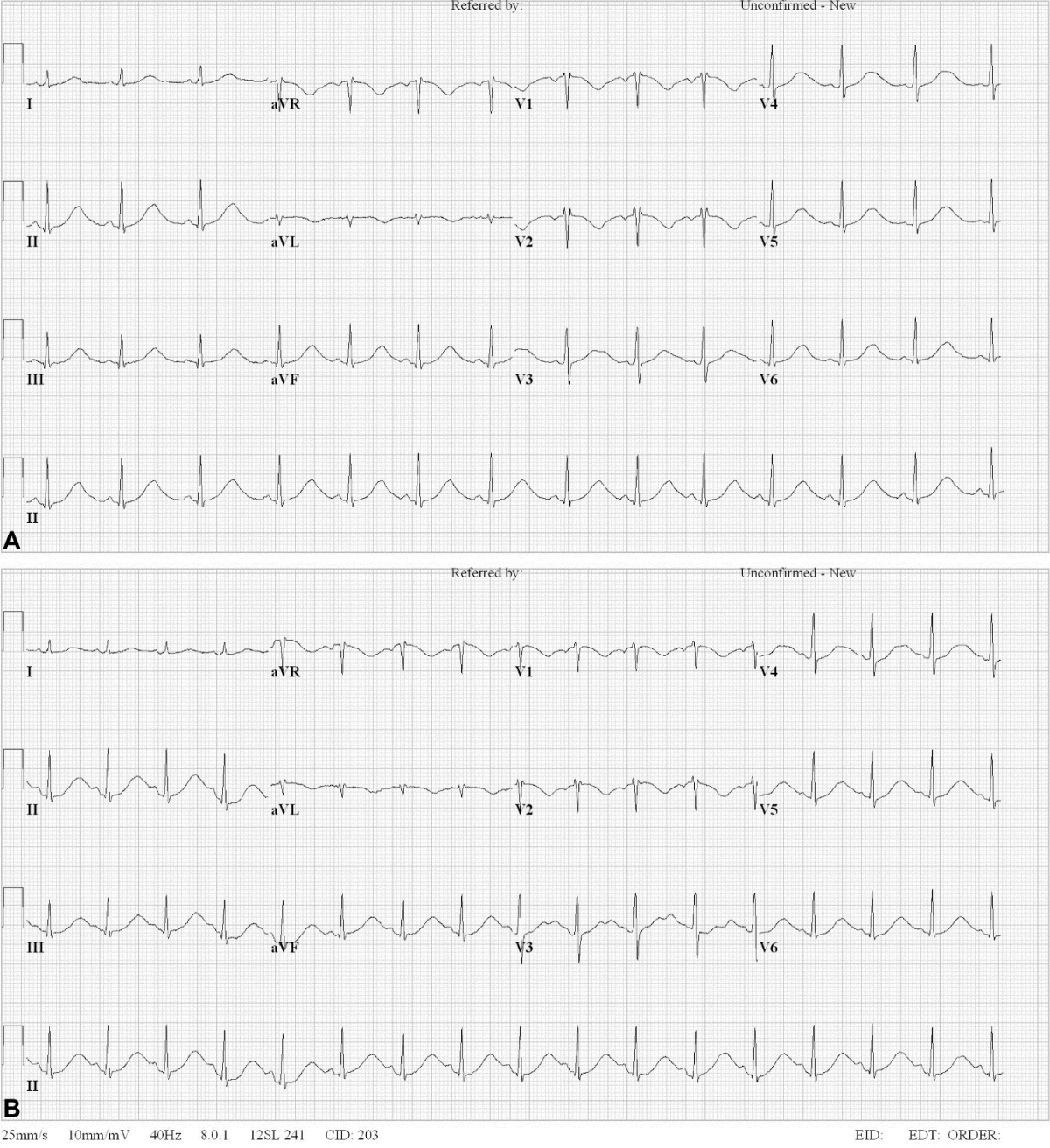Pediatr Emerg Med J.
2023 Jan;10(1):41-44. 10.22470/pemj.2022.00584.
A case of methamphetamine intoxication in an adolescent
- Affiliations
-
- 1Department of Emergency Medicine, Seoul National University Hospital, Seoul, Republic of Korea
- KMID: 2538082
- DOI: http://doi.org/10.22470/pemj.2022.00584
Abstract
- With the age of exposure to illegal substances decreasing and abuse of drugs such as methamphetamine increasing, substance abuse is no longer limited to adults. We report a Korean case of a 17-year-old girl with acute methamphetamine poisoning. The girl visited the emergency department for vomiting and loss of consciousness, with needle marks found on both arms. QT prolongation was confirmed on the initial electrocardiogram, so that we suspected drug addiction and proceeded with toxicologic tests. A lethal dose of methamphetamine was confirmed. We discontinued QT prolonging drugs, and closely monitored the girl in the pediatric emergency intensive care unit until the QT prolongation was resolved. This case highlights the recognition of pediatric methamphetamine poisoning in emergency departments.
Keyword
Figure
Reference
-
References
1. MacKenzie RG, Heischober B. Methamphetamine. Pediatr Rev. 1997; 18:305–9.2. Kevil CG, Goeders NE, Woolard MD, Bhuiyan MS, Dominic P, Kolluru GK, et al. Methamphetamine use and cardiovascular disease. Arterioscler Thromb Vasc Biol. 2019; 39:1739–46.3. Malashock HR, Yeung C, Roberts AR, Snow JW, Gerkin RD, O’Connor AD. Pediatric Methamphetamine toxicity: clinical manifestations and therapeutic use of antipsychotics-one institution’s experience. J Med Toxicol. 2021; 17:168–75.4. Yigit M, Gokdol MY, Kalaycı F, Akca Caglar A, Akcan Yıldız L, Kurt F, et al. Methamphetamine intoxication in children: a single-center experience. Turkish J Pediatr Dis. 2022; Jun. 1. [Epub]. https://doi.org/10.12956/tchd.1085284.5. Logan BK, Fligner CL, Haddix T. Cause and manner of death in fatalities involving methamphetamine. J Forensic Sci. 1998; 43:28–34.6. Druid H, Holmgren P. A compilation of fatal and control concentrations of drugs in postmortem femoral blood. J Forensic Sci. 1997; 42:79–87.7. Martínez-Aguirre AE, Romero-Mejía C, Chacón-Cruz E. Perforated peptic ulcer: is the form of methamphetamine known as “crystal meth” a new risk factor? Rev Gastroenterol Mex. 2012; 77:108–13.8. Ok YB, Kim JY, Lee KR, Hong DY, Baek KJ, Park SO, et al. A clinical review of patients who visited emergency medical center with positive methamphetamine tests: a single institute study. J Korean Soc Clin Toxicol. 2018; 16:25–32. Korean.9. Lee SK, Choi S. Availability of urine toxicologic screening tests in the emergency department: focused on illegal drugs. J Korean Soc Clin Toxicol. 2021; 19:24–30. Korean.
- Full Text Links
- Actions
-
Cited
- CITED
-
- Close
- Share
- Similar articles
-
- Postmortem Findings in Two Cases of Chronic Methamphetamine Abuse
- Effect of MK-801 on Methamphetamine - Induced Dopaminergic Neurotoxicity: Long-Term Attenuation of Methamphetamine - Induced Dopamine Release
- Seroprevalence of antibody to the hepatitis C virus in methamphetamine abusers
- Multiple Organ Dysfunction Syndrome and Quadriplegia due to Acute Methamphetamine Intoxication: A Case Report
- A Case of Fournier Gangrene after Penile Methamphetamine Injection


